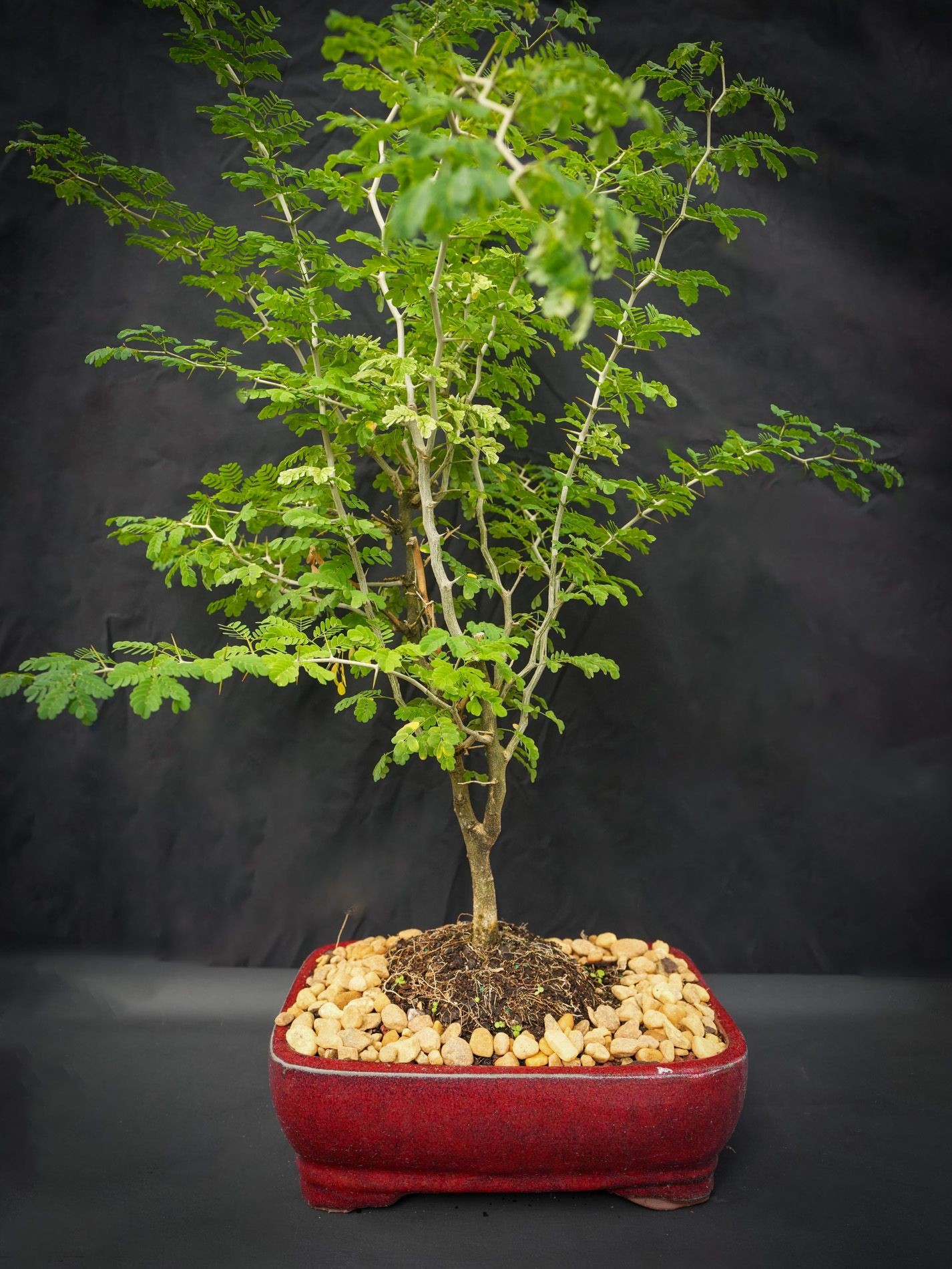SCIENTIFIC NAME: Chloroleucon tortum Syn. Pithecellobium tortum COMMON NAME: Brazilian Raintree UNIQUE CHARACTERISTICS: JAMACIAN RAIN TREE is a very popular bonsai species that is great for African-style flat top bonsai, as well as many other styles. Gorgeous vibrant compound foliage that closes up at night and when it rains.
Tree: DWARF RAINTREE
Age: Approx 12 yrs old
Height: 18+ inches
Waer: 2-3x a week
Location: Indoors and near window
Level: Beginner
General Background:
The rain tree is a hardwood legume that goes by the Latin name Pithecellobium tortum. Like most of its relatives this tree has compound leaves, hard wood and is very spiny. Easy indoor care makes this interesting rainforest tree a great bonsai for beginners.
Trees Features:
TRAINED FOR 7YRS
Temperature:
This Bonsai will tolerate temperatures in the upper 30 degree range, but not for a long time and should be brought indoors for the winter. This tree is very adaptable to indoor conditions which are a bonus for bonsai owners living in cooler climates.
Lighting:
Although it grows in full sun in its natural habitat, Brazilian Rain Trees as bonsai seem to appreciate some shade during hottest days of summer.
Watering:
You will need to keep this bonsai specimen evenly moist and ensure that it does not get too dry. Provide humidity with a humidity tray filled with pebbles and take care to ensure that you do not overwater in your attempts to provide enough moisture.
Fertilizing:
Purchase our organic fertilizer which you apply once every 4 months
When Pruning your Bonsai’s branches and twigs be sure to leave a small nub allowing for the possible die-back that often occurs. Many artists choose to avoid the use of a concave cutter on the Brazilian Rain Tree for this reason. Later this can be refined. Once the initial trunk and branch shape is established, the clip-and-grow method is the best way to develop shape in this bonsai. If you do decide to “wire”, it is best to use only nylon strips on green branches, leaving your wire only to tie down branches. Most of the styles used are upright because of the nature of the tree to grow straight when not affected by the winds in their natural habitat.
Propagation:
Air layering is said to be the best option when propagation is desired. To air layer, cut a small strip of bark away from the desired branch. Wrap the cut area with a small bag filled with moist sphagnum and peat- keep uniformly moist and wait about 6-12 weeks, at which time roots should begin to grow. Take the cutting once it has enough roots to live on its own in a new pot cutting just below the root ball and transplant into a container. Keep the peat/sphagnum mix around the roots when potting and enjoy your new bonsai.
Repotting:
You will want to ensure that you repot your bonsai in the spring in a fast draining soil as too much organic in the soil mix can create wet conditions which causes root rot, fungus and branch die-back. Prune your bonsai’s roots moderately and be sure to avoid fertilization for 4 weeks after transplanting.
Additional Comments:
Take care when working with your Brazilian Rain Tree as this plant is VERY spiny. Rinsing your tree’s leaves free of dust on a regular basis will ensure proper cell growth and keep your tree thriving.



